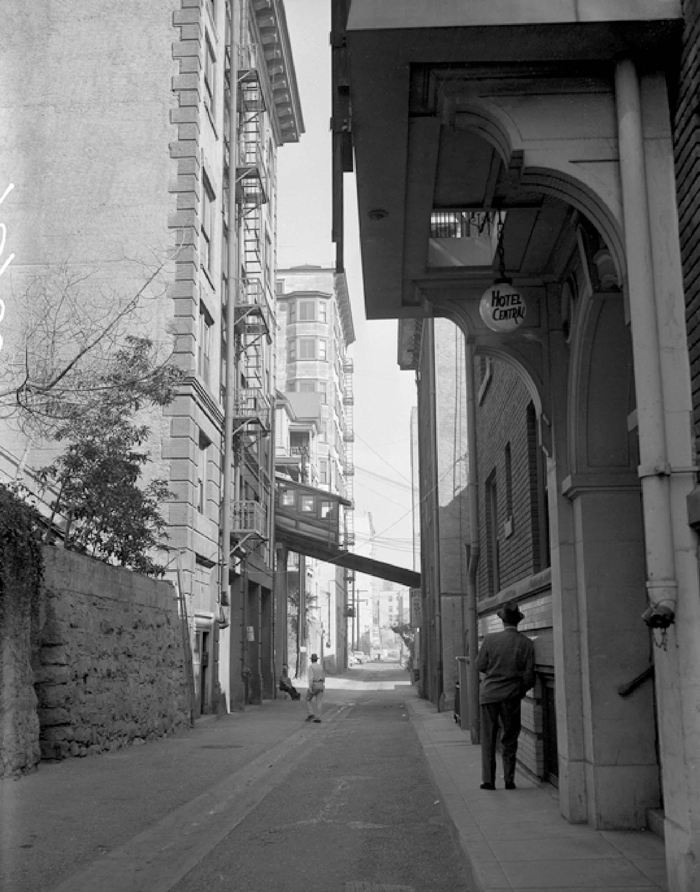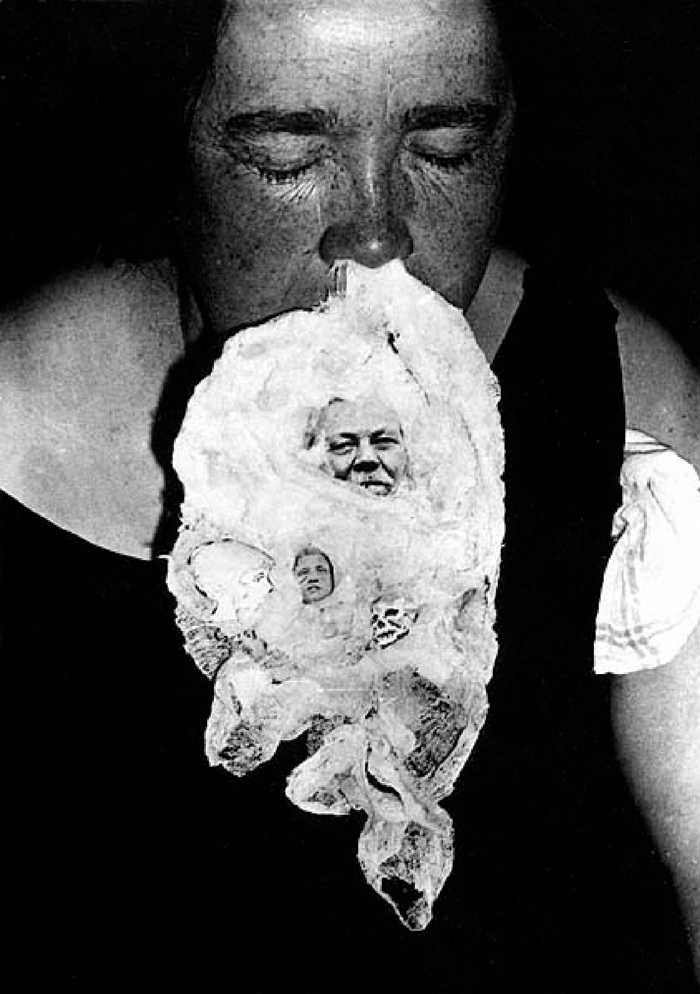
Know Your City No. 3, view down alleyway at Angels Flight car, Los Angeles, Calif., published in Los Angeles Times, November 20, 1955. Photographer unknown. Los Angeles Times Photographic Archive. Department of special collections, Charles E. Young Research Library, UCLA.
In the middle of the Twentieth Century, the Los Angeles Times ran a regular column that probed its readers’ knowledge of the city’s history and its burgeoning development. “Know Your City” asked readers if they could identify an area of Los Angeles based on a photograph of a building or place. Beneath the photograph were a few archly written lines to give the reader a clue. The answer would be located a few pages deeper into the paper.
This photograph of the original Angels Flight in downtown Los Angeles shows the angled funicular traveling over what was then Clay Street. What is striking about this image is how the photograph and site figure into the past and present of Los Angeles. At one instance a photograph, a document, and an artifact, this image holds particular import since the representation of the place has outlived the physical place itself. (Angels Flight was closed in 1969; it reopened at a new location in 1996.) This photograph serves as allegory for the social and political history of Los Angeles—that of a temporal and spatial displacement—and reminds us of the lived experience of Los Angeles that the newspaper column’s authors anticipated.
Phil Chang, Artist

Thomas Glendenning Hamilton, Conan Doyle’s Return (enlarged detail). Gelatin silver print of unknown date from negative taken June 27, 1932. Courtesy of the WM. B. Becker collection/ American Museum of Photography.
Since its inception photography has been used as a medium through which to make the unseeable visible. The trend of photographing ghosts and spirits in the 1860s spread to seances and spiritualist meetings in which spirits of the famous departed were channeled. This image, a detail of a larger image of the ghost of Arthur Conan Doyle spouting through the nose of medium Mary Marshall, fascinates me. Maybe it’s the fantastic mass of heads, skull drawings, and cheesecloth tumbling out in a jumbled cloud; the strange echoing of Marshall’s nose and browline in the face of Doyle; or the floating flatness of ectoplasm against the tactile depth and sheen of the medium’s flesh. A bizarre performance of the metaphysical, this image speaks to the desire to perceive in the most literal sense, explain the unexplainable in the simplest, wood-block letter sentences. For all its childlike, magic-trick staging, there’s a strange elegance to the image that holds my gaze, makes me wonder what else I’ll see arise out of its shadowy depths if I stare long enough.
Nancy Popp, Artist
